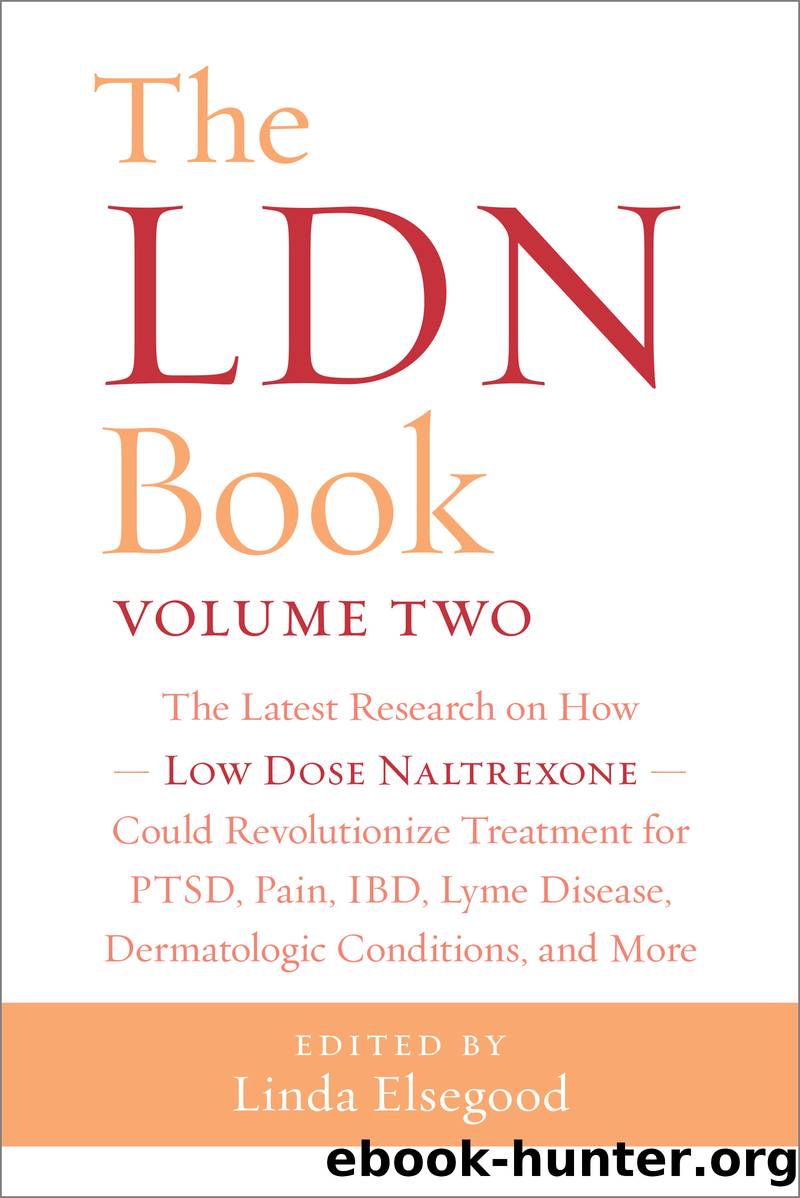The LDN Book, Volume Two by Linda Elsegood

Author:Linda Elsegood
Language: eng
Format: epub
Publisher: Chelsea Green Publishing
ââ â NINEâ â â
Dissociative Disorders
WIEBKE PAPE, MD
Dissociative disorders are among the most common trauma-related disorders after post-traumatic stress disorders. Dissociation, as opposed to association, describes a lack of integration of relevant information, or the separation of normally related mental processes. As defined by the Diagnostic and Statistical Manual of Mental Disorders, fifth edition (DSM-5), âDissociation is a disruption of and/or discontinuity in the normal, subjective integration of one or more aspects of psychological functioning, includingâbut not limited toâmemory, identity, consciousness, perception, and motor control. In essence, aspects of psychological functioning that should be associated, coordinated, and/or linked are not.â1
In an overwhelming traumatic situation, dissociation occurs as a part of the passive defensive response. It can be seen both as a pathological reaction and a protective mechanism, as dissociation makes it possible to keep traumatic memories from the conscious mind. The dissociative patient may experience amnesia around the traumatic event, or a feeling of detachmentâthe perception that the trauma did not happen to them (like, for example, the out-of-body-experience that often is reported by victims of car accidents). When an individual experiences repetitive and cumulative traumatization, especially during childhood, dissociative tendencies might enable them to disconnect from the traumatic events and form attachments, even to traumatizing or neglectful caregiversâa capacity that is crucial for survival. Another dissociative reaction to severe traumatization in childhood is the development of different personality states, some that are connected with traumatic memories and others that are settled in everyday life and often deny that the traumatization occurred. The development of cognitive and social skills as though the trauma didnât happen is possible, but in adult life dissociative symptoms usually become a severe impairment.
The Structured Clinical Interview for DSM-IV Dissociative Disorders (SCID-D)âa standardized diagnostic toolâidentifies five specific symptoms of dissociation:2
Amnesia or memory problems involving difficulty recalling personal information.
Depersonalization or a sense of detachment or disconnection from oneself. A common feeling associated with depersonalization is feeling like a stranger to oneself.
Derealization or a sense of disconnection from familiar people or oneâs surroundings.
Identity confusion or inner struggle about oneâs sense of self/identity.
Identity alteration or a sense of acting like a different person.
Download
This site does not store any files on its server. We only index and link to content provided by other sites. Please contact the content providers to delete copyright contents if any and email us, we'll remove relevant links or contents immediately.
Men In Love by Nancy Friday(5157)
Everything Happens for a Reason by Kate Bowler(4679)
The Immortal Life of Henrietta Lacks by Rebecca Skloot(4526)
Why We Sleep by Matthew Walker(4361)
The Sports Rules Book by Human Kinetics(4294)
Not a Diet Book by James Smith(3336)
The Emperor of All Maladies: A Biography of Cancer by Siddhartha Mukherjee(3067)
Sapiens and Homo Deus by Yuval Noah Harari(2987)
Day by Elie Wiesel(2720)
Angels in America by Tony Kushner(2596)
A Burst of Light by Audre Lorde(2546)
Endless Forms Most Beautiful by Sean B. Carroll(2431)
Hashimoto's Protocol by Izabella Wentz PharmD(2331)
Dirty Genes by Ben Lynch(2272)
Reservoir 13 by Jon McGregor(2242)
Wonder by R J Palacio(2140)
And the Band Played On by Randy Shilts(2129)
The Immune System Recovery Plan by Susan Blum(2030)
Stretching to Stay Young by Jessica Matthews(2001)
